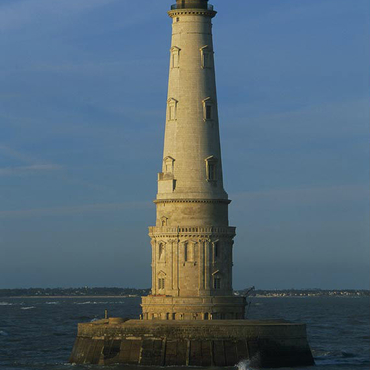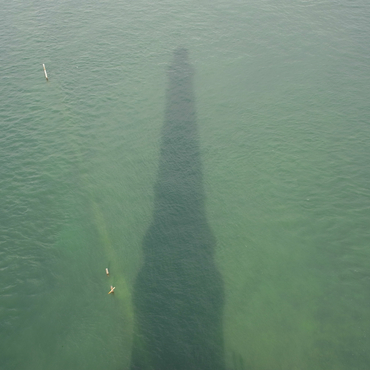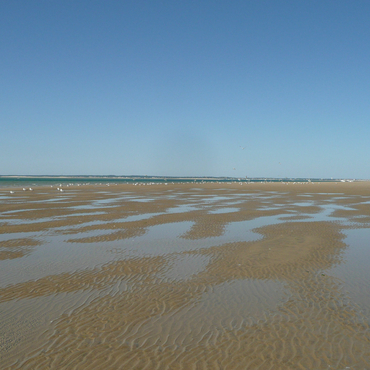
- Home
- The island of Cordouan
- An ever-changing naturak site
- The Cordouan plateau
Cordouan is a rocky plateau, visible at low tide, that extends in the direction of the Pointe du Verdon. The lighthouse stands on the highest part of the plateau. Over the years, vast movements of sand have formed and reformed the sand banks –blocking the mouth of the estuary, lengthening the Pointe de la Coubre, adding and removing a line of sand between Les Combots d'Ansoine and the sea, connecting and disconnecting Cordouan and the Pointe du Verdon. The infamous Mauvaise and Asne sandbanks are located nearby. In 2011, a new sandbank caused an islet to emerge between Cordouan and Royan, while shifting banks east of the plateau make access to the lighthouse more difficult with each passing season. As long as the sands don't change the substrate, mussels, seaweed, anemones, starfish, crabs and fish continue to flourish in the plateau's rocky zones. In order to stabilise the lighthouse's foundation, its designers were obliged to create an island on the plateau. Logs held in place by riprap were used to build a sandy plateau just tall enough to keep the worksite from flooding during all but the highest tides. Today, after four hundred years, nothing remains of this temporary structure; given the force of the wind and waves, this is hardly surprising. Most probably, after the work was completed, logs that washed up on nearby shores were reused for construction, while the riprap was ground into sand.






